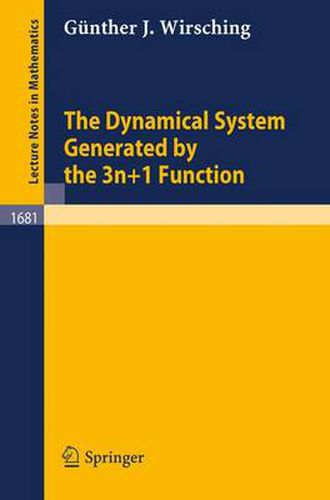Readings Newsletter
Become a Readings Member to make your shopping experience even easier.
Sign in or sign up for free!
You’re not far away from qualifying for FREE standard shipping within Australia
You’ve qualified for FREE standard shipping within Australia
The cart is loading…






This title is printed to order. This book may have been self-published. If so, we cannot guarantee the quality of the content. In the main most books will have gone through the editing process however some may not. We therefore suggest that you be aware of this before ordering this book. If in doubt check either the author or publisher’s details as we are unable to accept any returns unless they are faulty. Please contact us if you have any questions.
The 3n+1 function T is defined by T(n)=n/2 for n even, and T(n)=(3n+1)/2 for n odd. The famous 3n+1 conjecture, which remains open, states that, for any starting number n>0, iterated application of T to n eventually produces 1. After a survey of theorems concerning the 3n+1 problem, the main focus of the work is 3n+1 predecessor sets. These are analyzed using, for example, elementary number theory, combinatorics, asynptotic analysis, and abstract measure theory. The book is written for any mathematician interested in the 3n+1 problem, and in the wealth of mathematical ideas employed to attack it.
$9.00 standard shipping within Australia
FREE standard shipping within Australia for orders over $100.00
Express & International shipping calculated at checkout
This title is printed to order. This book may have been self-published. If so, we cannot guarantee the quality of the content. In the main most books will have gone through the editing process however some may not. We therefore suggest that you be aware of this before ordering this book. If in doubt check either the author or publisher’s details as we are unable to accept any returns unless they are faulty. Please contact us if you have any questions.
The 3n+1 function T is defined by T(n)=n/2 for n even, and T(n)=(3n+1)/2 for n odd. The famous 3n+1 conjecture, which remains open, states that, for any starting number n>0, iterated application of T to n eventually produces 1. After a survey of theorems concerning the 3n+1 problem, the main focus of the work is 3n+1 predecessor sets. These are analyzed using, for example, elementary number theory, combinatorics, asynptotic analysis, and abstract measure theory. The book is written for any mathematician interested in the 3n+1 problem, and in the wealth of mathematical ideas employed to attack it.